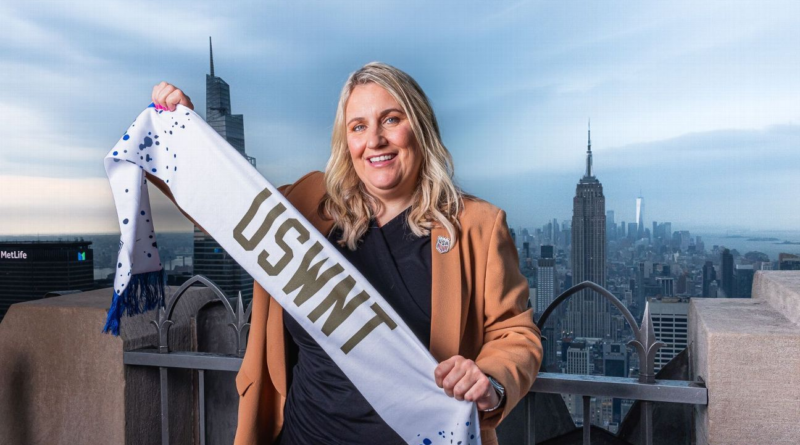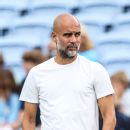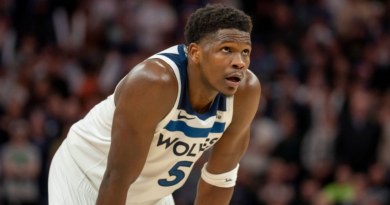Ahead of Olympics, can new USWNT coach Emma Hayes avoid struggles in switch from club game?
NEW YORK — Emma Hayes smiled and laughed as she fielded questions at the head of a long conference table in a corner room three stories above bustling Madison Avenue. She wore a small U.S. Soccer pin on the left side of her light brown blazer as the only visual clue of her new role as U.S. women’s national team head coach.
This is the job she had dreamed of earning for more than two decades — the biggest job in women’s soccer. This is the job her late father and best friend, Sid, told her to go after as he lay on his deathbed in September — the job Hayes discussed with Sid as if she had already obtained it, because she wanted him to leave with that memory.
The USWNT job is also an international coaching position, markedly different from the club setting Hayes has operated in throughout her career. Hayes’ 12-year tenure as the head coach at Chelsea is what made her famous as one of the best managers on the planet.
“I’m not concerned,” Hayes told a small group of reporters, including ESPN, on Thursday. “I think it’s the same when anybody goes from one organization to the other. It’s football — at the end of the day, it’s 11 vs. 11.”
• Stream on ESPN+: NWSL, LaLiga, Bundesliga & more (U.S.)
Her point is valid, but how she handles the transition is among the biggest questions around her hire, in which she replaces another club coach, Vlatko Andonovski, who struggled to make the jump to the international game. Under Andonovski — a championship-winning NWSL coach — the U.S. women’s team suffered a historically poor 2023 World Cup, winning just one game out of four en route to the club’s earliest exit in a major tournament.
Hayes’ hire has been widely lauded as a step in the right direction for the U.S. team — she won five straight league titles and 16 total trophies in 12 years at Chelsea. She is irrefutably among the best coaches in soccer, but she has not managed a team at the international level, where the cadence of the schedule means less time spent coaching and working with players.
The professional club setting allows coaches to meticulously refine their teams daily in training and to see the results of those changes in matches every week. International soccer is a different beast. The cadence of U.S. team training camps limits on-field coaching to a few days every month or two, with a couple of games squeezed into each window.
There is not always an immediate second chance to correct a poor performance, and in the knockout setting of international tournaments — which Hayes will experience for the first time at the Olympics in two months — one bad showing could seal a team’s fate.
There are recent, prominent and proximate examples of the difficulty in making the switch. Indeed, the transition between the club and international game has foiled many capable managers — Andonovski was honest about how the lack of time with players was one of his biggest challenges in transitioning from the club setting.
“I just love coaching, daily coaching, and working with the players on a daily basis,” Andonovski said upon his recent return to the NWSL. “In the national team environment, that’s impossible.”
Andonovski won two NWSL championships and established himself as one of the best coaches in the league prior to his appointment as U.S. women’s head coach in late 2019. He faced numerous challenges on the road to the 2021 Olympics and the 2023 World Cup — the pandemic the most unique among them — but ultimately struggled to find the right balance for the team in the way he might have with more regular interaction, like in the club game.
He is thriving again in his return to the club setting: The Kansas City Current are off to an unbeaten start through 11 games under Andonovski.
Mark Parsons was also a successful NWSL coach before taking the job as the Netherlands head coach in 2021. He briefly guided the Dutch to a difficult quarterfinal exit at the Euros in 2022 before his contract was terminated by mutual consent. Like U.S. Soccer’s six-month wait for Hayes while she finished this season at Chelsea, Parsons juggled the Netherlands job and his final season at the Portland Thorns throughout 2021.
Hayes is her own person, a point she would be quick to make with her human-first approach. She said she plans to speak with Andonovski and his predecessor, Jill Ellis, among others as part of preparing for the job.
1:18
Hayes promises her USWNT will play ‘with fire’
Emma Hayes explains the style of play she wants to see from the USWNT under her leadership.
Hayes has a master’s degree in intelligence and international affairs. She craves an understanding of how things and people work. She is serious, not naïve or flippant, when she says she’s been watching USWNT video profiles about players’ backstories and the recent Netflix documentary about the team to learn more about her team’s personalities.
“When you manage human beings, it’s pretty easy to get the best out of people you understand and you know — it’s a lot harder when you have to do that with people completely different,” Hayes said.
There are few personalities like Hayes, another point she jokingly made Thursday, and a strong presence is certainly needed at the helm of the USWNT.
The USWNT squad has historically featured some of the biggest personalities in women’s soccer, which has not suited every coach. The laid-back and affable Tom Sermanni was infamously and abruptly ousted as USWNT coach in 2014. Sunil Gulati, U.S. Soccer’s president at the time, denied that Sermanni was sacked because of a player revolt, but it was clear Sermanni’s style didn’t fit what the federation — and the players — wanted.
Andonovski, meanwhile, was favored by USWNT players when he was hired for the role, having worked with some as their NWSL coach, and he called the USWNT players his “friends” during the World Cup. But player-turned-commentator Carli Lloyd, who was critical of her former team during the World Cup, said that when players complained training sessions were too hard, he made them shorter.
Hayes, for her part, describes herself as a good listener who is firm when she needs to be, but always empathetic. She is a superior communicator, too, a skill she will need as she navigates a transition from veterans to the next generation of USWNT players.
“I’m going to work hard on that culture piece, something I’ve done throughout my career,” Hayes said. “Because what I’ve learned is if you don’t deal with that part, that’s what can cause as in any workplace, some of the in absence of communication, what happens? There’s conversation, isn’t there? And usually the wrong type of conversation.”
One of the USWNT’s biggest issues at the 2023 World Cup was tactical, though. Players were unable to solve problems when opponents like Portugal shut down the USWNT’s initial game plan, and there was a rigidity in their approach.
Hayes is known for her tactical flexibility, which was already clear in her six months of overseeing the team from afar as interim head coach Twila Kilgore officially led the team. In that time, the USWNT experimented with different midfield balances, as well as three-backs and overloads on the wing.
“The framework, the methodology, the principles of play are completely clear, and they never change, but roles might change,” Hayes said. “In terms of the limited time I have, I’ve got to keep it simple.”
1:32
Hayes says the USWNT’s period of solo dominance is over
New head coach Emma Hayes says the USWNT is no longer the dominant women’s international force.
Can she successfully implement her tactics in this setting, and with only two rest days between games at the Olympics? Will those messages be clear and concise enough to translate at the Olympics?
However it plays out, expectations likely need to be tempered for this summer. U.S. Soccer’s hiring of Hayes, and the decision to wait an extra six months for her to arrive so she could finish her club season with Chelsea, was a clear concession that she was a long-term hire, even at the expense of the short-term. U.S. Soccer knew she would only have two months to prepare for the Olympics, which begin in July, but hardware at the 2024 Olympics may be the necessary sacrifice to win the 2027 World Cup.
One thing about Hayes’ transition from the club setting is clear: A weight — “a boulder,” she called it — has been lifted off her shoulders. Unlike Andonovski, who craved that daily grind, Hayes grew exhausted by it over time, particularly with a now 6-year-old son in tow. A game every three days, press conferences before each, player meetings each day? Hayes said again Thursday that she “categorically couldn’t do that again — not this moment in time.”
She’s in Denver now, meeting the first USWNT squad she can fully call her own. After a pair of friendlies against South Korea, she’ll bounce between England and the U.S. before settling around Atlanta, where U.S. Soccer is in the process of building a dedicated training center.
Hayes will get some time to breathe in late August, if she’ll allow herself to. First comes a sprint to the Olympics, Hayes’ first big test in a different type of arena.
“There’s a different ebb and flow to international football,” Hayes said “I think the change has re-energized [me]. I felt it today in particular. And yes, of course, in an ideal world, everybody would love to be sitting on a beach somewhere now, for a couple of weeks. But my perspective is really clear: You don’t get many opportunities to go to an Olympics in your life.”




